The Northern Colorado Regional Forensic Laboratory (NCRFL) provides forensic science services to the Weld County Sheriff's Office, Larimer County Sheriff's Office, the Greeley Police Department, Fort Collins Police Services and the Loveland Police Department. In addition, the Colorado Bureau of Investigation is a full participant in the laboratory and offers its services to any law enforcement agency within the northern Colorado region, as well as serving as the quality oversight agency for the regional lab. This regional lab has staff provided by all 6 agencies listed above working in the following forensic disciplines: digital and multimedia evidence (computers/cell phones, audio analysis and video analysis), latent prints, impression evidence (shoe and tire track comparisons), firearms and tool marks (to include serial number restoration and distance determination), drug chemistry analysis, and forensic biology.
The services provided by the highly trained personnel in the NCRFL are as comprehensive in the specialty areas described above as would be found in large, metropolitan laboratories. The goal of the lab is to provide quality services that meet the needs of the criminal justice system in the northern Colorado region. Laboratory examinations and analysis carried out with integrity and technical competence will help exonerate the innocent, as well as help convict the guilty.
Digital & Multimedia Evidence
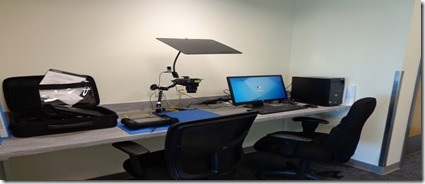 Digital and multimedia evidence is a forensic service that has increased in demand in the last several years. The discipline encompasses two basic areas: computer forensics and audio/video analysis. Examiners work first to collect the digital data/images that can be found in various digital devices, to include smart phones, computers, GPS and surveillance systems. Secondly, the examiners employ various technologies, both software- and hardware-based, to interpret the data collected to provide useful information to assist in law enforcement investigations.
Digital and multimedia evidence is a forensic service that has increased in demand in the last several years. The discipline encompasses two basic areas: computer forensics and audio/video analysis. Examiners work first to collect the digital data/images that can be found in various digital devices, to include smart phones, computers, GPS and surveillance systems. Secondly, the examiners employ various technologies, both software- and hardware-based, to interpret the data collected to provide useful information to assist in law enforcement investigations.
Latent Prints
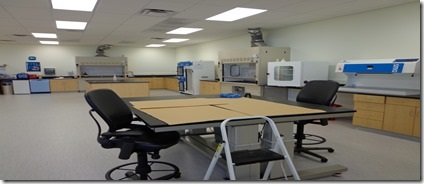 Fingerprint comparison is one of the oldest recognized forensic specialties. However, before a comparison can be made, fingerprints must be found, revealed and documented. Many specialized methods have been developed to reveal fingerprints on the many surfaces needing fingerprint processing. In addition to the fingerprint powders that are available, there are many chemical methods used to treat surfaces. Most of these chemical methods are used in conjunction with an "alternate light source" to enhance the detail and contrast of a fingerprint on a surface. Prints revealed with powders are "lifted" with tape and placed on a contrasting background for examination. Prints revealed using other methods must be photographed to scale, and the photos used by the examiner for comparison. A fingerprint comparison expert must then judge the quality and detail in an unknown print before a comparison can be made. Using high-resolution digital photography and image enhancement software, an examiner can digitally "remove" things like repeating patterns or interfering colors on the surface of the print and then the fingerprint is photographed to produce a better quality image.
Fingerprint comparison is one of the oldest recognized forensic specialties. However, before a comparison can be made, fingerprints must be found, revealed and documented. Many specialized methods have been developed to reveal fingerprints on the many surfaces needing fingerprint processing. In addition to the fingerprint powders that are available, there are many chemical methods used to treat surfaces. Most of these chemical methods are used in conjunction with an "alternate light source" to enhance the detail and contrast of a fingerprint on a surface. Prints revealed with powders are "lifted" with tape and placed on a contrasting background for examination. Prints revealed using other methods must be photographed to scale, and the photos used by the examiner for comparison. A fingerprint comparison expert must then judge the quality and detail in an unknown print before a comparison can be made. Using high-resolution digital photography and image enhancement software, an examiner can digitally "remove" things like repeating patterns or interfering colors on the surface of the print and then the fingerprint is photographed to produce a better quality image.
Forensic Biology / DNA Analysis
Forensic biology involves the identification of biological fluids found on items of evidence submitted to the laboratory. The identification process may involve only a presumptive test, or it may be followed up with a confirmatory test. There may be cellular material containing DNA not related to a bodily fluid that can be collected for further analysis. All of this work is performed in the screening section of forensic biology. DNA testing follows the screening process on those items determined to be of value for further testing to identify the source of a stain or cellular material deposited at the scene. Once a DNA profile is developed it can be compared to known DNA profiles provided for comparison.
Drug Chemistry Analysis
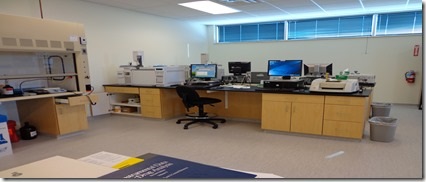 The drug chemistry analysis services involve the use infrared spectroscopy (I.R.) and gas chromatography/mass spectroscopy (GC/MS), as well as microscopic examinations and photography where appropriate. The majority of cases requiring chemical analysis involve identifying controlled substances (illegal drugs). Although this is our primary duty, we can also analyze items to identify their composition.
The drug chemistry analysis services involve the use infrared spectroscopy (I.R.) and gas chromatography/mass spectroscopy (GC/MS), as well as microscopic examinations and photography where appropriate. The majority of cases requiring chemical analysis involve identifying controlled substances (illegal drugs). Although this is our primary duty, we can also analyze items to identify their composition.
Firearms/Toolmarks
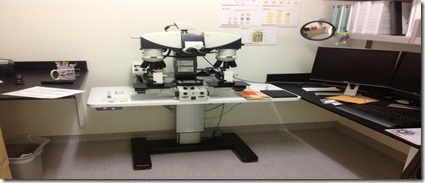 Firearms examiners employ forensic analysis on firearms, ammunition, ammunition components, tools, tool marks and other tool-related evidence. Examiners may also perform examinations on clothing, bedding and other surfaces for the presence of gunshot residues or powder patterns, muzzle to target distances determinations, chemical restoration of obliterated serial numbers, cartridge case ejections and trajectory evaluations. Examiners may respond to scenes to assist in the documentation and collection of evidence, chemical testing for trace metals, reconstruction and diagramming of shooting events, and to provide technical assistance to investigators.
Firearms examiners employ forensic analysis on firearms, ammunition, ammunition components, tools, tool marks and other tool-related evidence. Examiners may also perform examinations on clothing, bedding and other surfaces for the presence of gunshot residues or powder patterns, muzzle to target distances determinations, chemical restoration of obliterated serial numbers, cartridge case ejections and trajectory evaluations. Examiners may respond to scenes to assist in the documentation and collection of evidence, chemical testing for trace metals, reconstruction and diagramming of shooting events, and to provide technical assistance to investigators.
Shoe & Tire Track Impressions
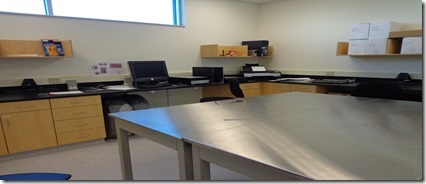 Shoe and tire track impression evidence is commonly found at crime scenes. Crime scene investigators will document these impressions through photography and casting or lifting techniques. It is the job of the shoe and tire track examiners in the lab to compare shoes or tires submitted in photographs, castings and lifts to determine if they made, could have made, or did not make the impressions found at the crime scene.
Shoe and tire track impression evidence is commonly found at crime scenes. Crime scene investigators will document these impressions through photography and casting or lifting techniques. It is the job of the shoe and tire track examiners in the lab to compare shoes or tires submitted in photographs, castings and lifts to determine if they made, could have made, or did not make the impressions found at the crime scene.
Crime Scene Investigation
While the NCRFL does not respond to crime scenes of an individual agency, lab staff may be assigned to provide that service for their agency. If called upon for expert assistance in a given discipline, the laboratory may be capable of providing staff to assist the agency's deputies, officers, and/or investigators at major crime scenes. They may assist in the diagramming of crime scenes, the processing of evidence if needed at the scene, and the correct accounting for all the collected evidence.